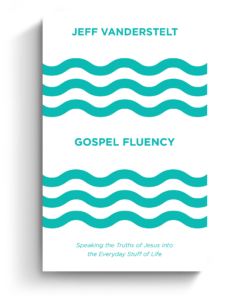The doctrine of definite atonement is nothing if not controversial. That Jesus died to rescue his bride is a precious truth, one all Christians embrace. But the suggestion he didn’t die to rescue everyone—well, that doesn’t prompt so many hugs. TULIP’s middle petal has a particular tendency to provoke muted embarrassment or yawning indifference, if not visceral rejection. Some say it’s more logical than biblical. Others say it’s too esoteric to be important, or too unloving to be true.
But what if, when properly understood, this difficult doctrine turns out to be not a source of embarrassment but a resource for joy? From Heaven He Came and Sought Her: Definite Atonement in Historical, Biblical, Theological, and Pastoral Perspective (Crossway) [Website | Twitter] is a towering new tome making the case that definite atonement is not only historically reputable and biblically faithful, but also practically and pastorally glorious. With contributions (and endorsements) from a sterling array of pastors and scholars, this is a volume that deserves serious engagement—regardless of where you lean or land.
I talked with editors David and Jonathan Gibson about “4-pointers,” evangelism, whether they oversell their case, and more. Also, be on the lookout for reviews from Jason Duesing (tomorrow) and Robert Yarbrough (Monday).
Why should ordinary Christians invest this much time and money into studying this doctrine right now?
Sometimes we only invest in current controversies. Evangelicalism seems adept at publishing into a storm. And often that’s right and necessary. But perhaps some of our best thinking happens in the study of old truths with a calm mind in order to restate them for a new day.
Definite atonement might be a controversial doctrine, but there isn’t, so far as we’re aware, a massive contemporary controversy about it in the way there was several years ago over penal substitution. So it seems the time is ripe for a fresh contribution on the nature of the atonement that may gain a hearing without battle lines already entrenched and minds resolutely made up.
Perhaps this is too idealistic. The doctrine itself found confessional status as part of a controversy (the Synod of Dort was responding to the Remonstrance of 1610), and debate has followed in its wake ever since. Yet the synod lasted for six months. Is that enough in itself to model the sort of patience with and depth to theological discussion we rarely encounter in our tweet-sized, RSS-feeding frenzied attention spans?
That’s kind of a wide-angle lens answer to your question. A close-up answer might be: because definite atonement penetrates the meaning of the cross in the most profound way possible and displays its beauty and power.
What is the most common evangelical misunderstanding related to definite atonement?
The biggest misconception is probably connected to the foreboding landscape that comes into view when the doctrine is referred to as “limited” atonement. When cast this way either God’s love is portrayed as limited (so Mark Driscoll and Gerry Breshears in Death by Love); or the emphasis falls on the number of the redeemed being limited; or the gospel’s universal offer is viewed as limited. The biggest misunderstanding might be that “limited” atonement seems to proclaim what God doesn’t do when in fact it should spotlight what he does do: God saves sinners.
But then again, from a different angle it could be argued that many who hold to penal substitution without holding to definite atonement fail to see how denying the atonement’s definite intent redraws its penal nature. Our book contends that believing in penal substitution while rejecting definite atonement is a common misunderstanding of penal substitution.
Many Amyraldians or “4-point Calvinists,” while espousing a particular election (by the Father) and a particular application (by the Spirit), hold to a universal atonement (by the Son). What’s problematic about emphasizing particularity at the stage of application but not at the stage of atonement?
The Amyraldian view of the atonement leads to disharmony or dissonance in the triune God: the Father elects some, the Son dies for all, but the Spirit only draws some (those whom the Father elected). The same problem attends semi-Pelagianism and Arminianism. Hypothetical universalists seek to get around the problem by positing “two levels” in the atonement: a universal intent and a particular intent (see, for example, Curt Daniel and Norman Douty). According to this scheme, the Trinity is united at each level of intent. However, this position lacks scriptural support despite attempts based on a certain (and, we believe, superficial) reading of 1 Timothy 4:10.
Hypothetical universalism also leads to a confusion within the will of the Son. How can Christ on the cross, in his one act of propitiation, will both to die for the non-elect and not to die for them? This distorts orthodox Christology. Christ is presented in the Bible as King, Shepherd, Bridegroom, Head, Master, Firstborn, Cosmic Savior, and Last Adam. This is who the incarnate Son is, and therefore when he dies for sinners he cannot fail to be for them who he is. The person and work of Christ cannot be separated. In short, both trinitarianism and union with Christ point toward a definite intent in the atonement, as both ensure its efficacy.
Why might it be more helpful to speak of the “intent” of the atonement rather than the “extent” of the atonement?
The word intent provides greater precision in discussions on the atonement, though the word extent can qualify different aspects of the atonement: its design, accomplishment, and application. The classic Reformed line on definite atonement is that all aspects of the atonement possess the same extent (design, accomplishment, application), whereas in Arminianism and Amyraldianism the extent is limited only at the point of application.
However, since all sides agree on the limited extent at application, we need to define the issue more precisely. For example, the well-known Lombardian maxim “sufficient for all, efficient for some” is not, contrary to popular opinion, the summary of the Reformed view of definite atonement. Arminians can agree with that statement. The whole discussion turns on the issue of the intent of Christ’s atonement. Louis Berkhof helps us here: “Did the Father in sending Christ, and did Christ in coming into the world, to make atonement for sin, do this with the design or for the purpose of saving only the elect or all men? That is the question, and that only is the question.” Focusing on the intent rather than the extent of the atonement also steers us away from trying to “quantify” the atonement in commercial or mathematical terms and instead brings the purposes of our triune God front and center.
How can proponents of definite atonement sincerely offer salvation to every person?
Particularity of grace in election or atonement does not mitigate a universal gospel offer. We should follow Christ’s example.
In Matthew 11, Jesus explains that no one knows the Father except the Son and those to whom the Son chooses to reveal him (v. 27). The particularity is explicit. Yet in the very next verse, Jesus gives a universal offer to everyone to come to him and find rest (v. 28). In John 6, Jesus claims he has come from heaven to do his Father’s will, which is to lose none of those given to him but to raise them up on the last day (v. 39). This is actually the reason why (“For”) whoever comes to him will never be turned away (v. 38). The Father’s will is that “everyone” who looks to the Son and believes will have eternal life (v. 40). Christ’s purpose in coming was particular; the work he performed in his life, death, resurrection, and ascension was particular (cf. John 17); and yet his invitation was universal. It was also sincere. Did Christ know all those whom the Father had given him as he encountered the many crowds during his ministry? Of course. Did he still offer himself to everyone in the crowd? Yes.
But here’s the take-home value in definite atonement. When we offer Christ to sinners, we aren’t offering them the mere opportunity or possibility of salvation (as semi-Pelagians, Arminians, Amyraldians and Hypothetical Universalists can only do if they’re consistent); rather, we’re offering them a Christ whose first name really means “Savior” (Matt. 1:21). And this is only so because God presented him as a propitiation for sinners—not potentially or possibly or hypothetically, but actually.
Though Christians throughout history have frequently spoken of the atonement in definite terms, the number of Christians worldwide who agree with this doctrine as expressed in its classical Reformed sense is relatively small. How would you respond to a universal atonement advocate who is concerned you oversell the doctrine by elevating it to a position at “the heart of family life” (p. 15) and “the nerve center of the glory of God” (p. 53)?
Is the number relatively small? We’re not sure we could confidently pronounce on that. Either way, we’re with Athanasius: number of proponents isn’t much of an indicator of anything other than number of proponents.
That said, you’re right these are strong claims. Let us give one qualification to help explain the first, and one reason to help validate the second.
First, when we say the doctrine belongs at the heart of family life we are talking about the Reformed family. We agree with J. I. Packer that particular redemption is the “true intellectual center” of the Reformed faith, with that faith itself the “true intellectual mainstream of Christianity” (see foreword). By implication, then, we think the doctrine should be part of every Christian theological tradition. But the claim we’re making here is more narrowly focused on those coming to embrace Reformed theology yet wishing to leave definite atonement out in the rain. Only four seats at the table means we should cancel the party.
Second, many things could be said here, but take the issue of penal substitution again. How can the execution of an innocent man, punished in the place of the guilty, be a revelation of divine glory? It can only be so when we see that the Bible nowhere speaks of mere substitution but instead of representative substitution. One person cannot substitute for another unless there is some kind of bond between them—above and beyond their shared humanity—which allows one to take responsibility for the other. There needs to be a legitimate judicial transfer. Jesus did not die as Anyone for others. He died in his relational offices (King, Shepherd, Bridegroom, Head, Master, Firstborn, Cosmic Savior, and Last Adam) as a public, covenanted man for his chosen, covenantal people. His death was an in-union-with kind of death; the “for us” cannot be separated from the “with us.” Henri Blocher’s chapter in the book argues eloquently for this: substitution under capital punishment is anemic if no precise class is in view.
So the glory of God displayed in the cross is the glory of a sin-bearing death on behalf of people bound to the One offering himself. All the majestic beauty and poetic drama of the cross is here. Without it, the cross is an immoral miscarriage of justice.
John Piper on Definite Atonement in Pastoral Practice from Crossway on Vimeo.
“The Most Practical and Engaging Book on Christian Living Apart from the Bible”
 “If you’re going to read just one book on Christian living and how the gospel can be applied in your life, let this be your book.”—Elisa dos Santos, Amazon reviewer.
“If you’re going to read just one book on Christian living and how the gospel can be applied in your life, let this be your book.”—Elisa dos Santos, Amazon reviewer.
In this book, seasoned church planter Jeff Vanderstelt argues that you need to become “gospel fluent”—to think about your life through the truth of the gospel and rehearse it to yourself and others.
We’re delighted to offer the Gospel Fluency: Speaking the Truths of Jesus into the Everyday Stuff of Life ebook (Crossway) to you for FREE today. Click this link to get instant access to a resource that will help you apply the gospel more confidently to every area of your life.

































